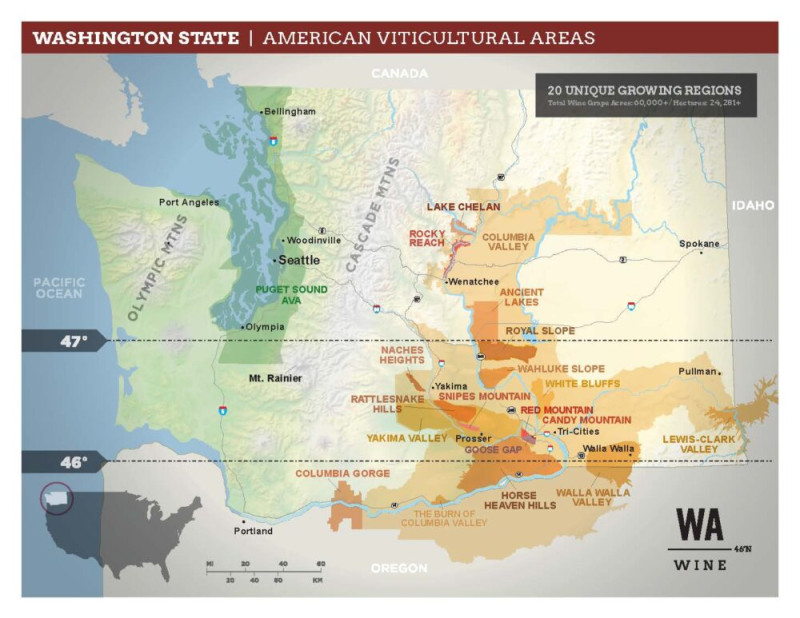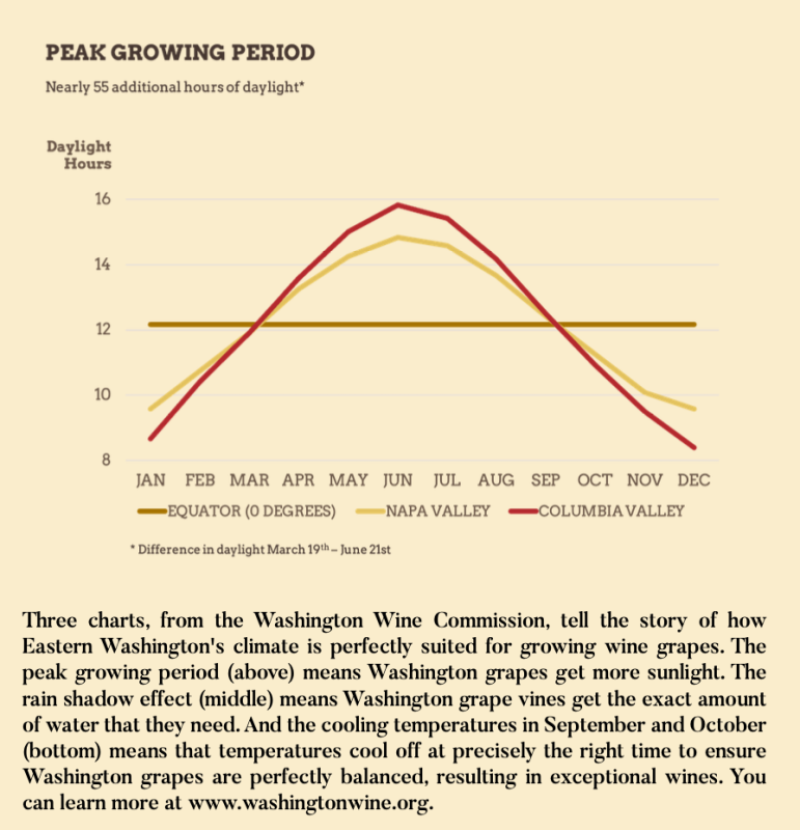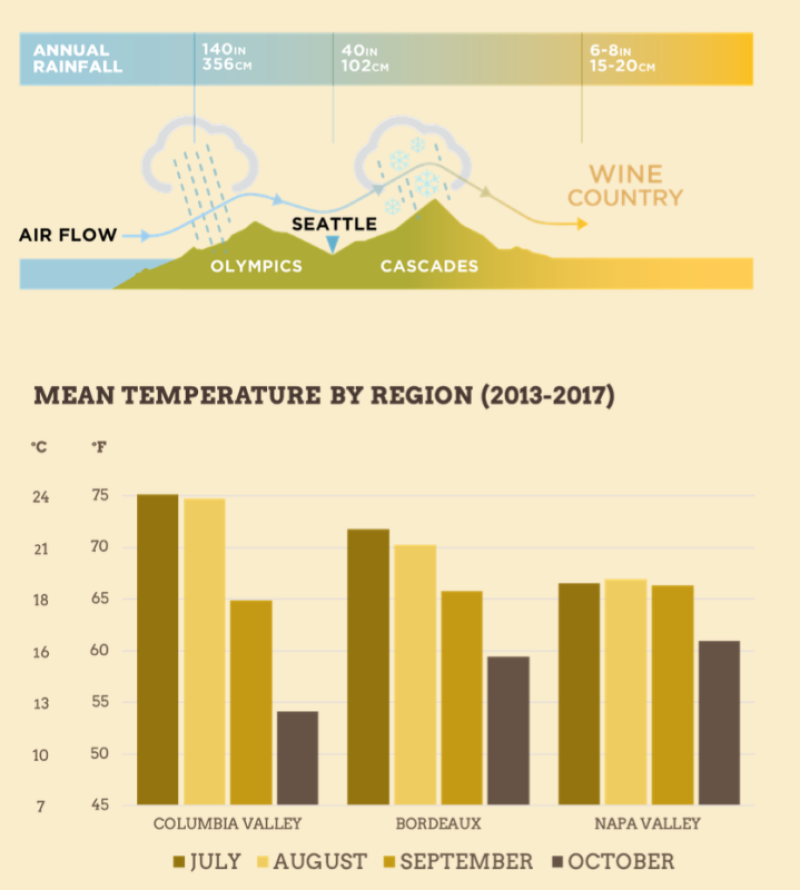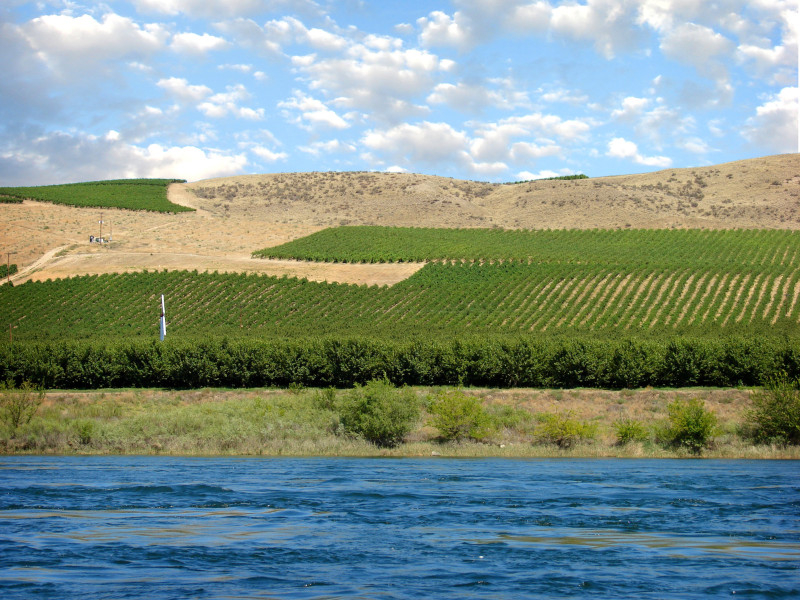It’s Pronounced “Tehr-waar”

IN CASE YOU'VE BEEN OUT OF THE LOOP for the last few decades, Eastern Washington has been gaining some serious recognition as a premier wine-growing region. It seems like, in 2023, every conversation about Napa and Bordeaux and Tuscany now also must mention Walla Walla and Yakima. Five Washington wines made the list of the world’s 100 best, published annually by Wine Spectator. But what is it about Eastern Washington that makes it so perfect for growing award-winning wine grapes?
Though the first wine grapes were planted in Washington nearly 200 years ago, by the mid-80s, there were just 40 wineries in the state. Now there are more than 1,000, and Washington has grown into the USA’s second-largest wine-growing state – and the growth seems to be accelerating. This spring, state production reports reflected a 34% increase in total grape production over last year. Several of Washington’s favorite varieties still top the list: chardonnay, riesling, sauvignon blanc, and pinot gris had the most production for white wines. Cabernet sauvignon, merlot, and syrah topped the red wine output.
Unlike many wine regions of the world, Washington cannot be defined by a single grape variety or even a group of grapes. The state has 20 different American Viticultural Areas (AVAs), each with a varied climate that allows a wide assortment of varieties to excel.
“Wine is about tasting a place, so when you taste a Red Mountain Cabernet Sauvignon, you’re tasting Red Mountain,” said Shae Frichette of Frichette Winery. “Grapes here are a lot more intense and assertive. Weather, soil, the way the wind blows, the amount of water you get or don’t get – all of those factors come together and make what’s called terroir.”
Terroir is a big word in the wine world, and it essentially means the combination of factors that gives each wine grape a different flavor. Grapes grown in Washington will taste different from the same variety of grapes grown in California or Italy or Portugal, because of the terroir in which they are grown. Luckily, Washington’s unique geography and climate create optimal conditions for cultivating exquisite wines. Most farmers point to two crucial factors: the Cascade Rain Shadow and the diurnal effect of hot summer days and cold nights.
While many wineries keep tasting rooms in cities along the I-5 corridor, very few grapes are grown west of the Cascades, where it is too cool and rainy. To see the vineyards, you have to head east, over the Cascade Mountain Range, to places like Horse Heaven, Red Mountain, Chelan, and Wahluke.
The reason for this drastic difference in production between East and West is the rain shadow effect of the Cascades, which is quite dramatic. Seattle gets nearly 40 inches of rain a year, while the Columbia Valley is effectively a desert, with average rainfall around 10 inches in many places. But when you temper this arid climate with abundant irrigation from the Columbia and Yakima Rivers, things start to look “just right” for growing wine grapes.
The use of irrigation gives growers a high degree of control over the quality of their grapes, but it’s the heat itself that contributes to a grape’s flavor profile. During the growing season, the grapes receive up to 17 hours of sunlight a day, considerably longer than many other wine regions. Then, as night falls, the temperature drops significantly, a difference of as much as 47 degrees F between daytime high and nighttime low temperatures.
That daily temperature roller-coaster ride, called the “diurnal shift,” is a major factor in growing the best grapes. Those cooler temperatures help the grapes to main- tain their acidity, which balances out the sweetness of the sugars that thrive in the heat. That effect is compounded as harvest time approaches, and the area’s daytime temperatures begin to cool down nicely. Wine regions all over the world count on these rapid temperature changes, but Washington’s are particularly abrupt. Compared to Bordeaux and Napa Valley, for instance, Eastern Washington is both hotter during summer days and colder during the harvest season.
As wine enthusiasts explore Eastern Washington's vineyards, from the sundrenched landscapes of Candy Mountain to the picturesque sites of Royal Slope and Ancient Lakes, they can truly taste the essence of each AVA’s distinct terroir. And the entire state is bonded by a winemaking culture that continues to push boundaries and produce wines of exceptional quality.
In the grand tapestry of the wine world, Eastern Washington has emerged as a dynamic and vibrant player, attracting attention and admiration alongside renowned wine regions. If you’ve been out of the loop for a few decades, it’s time to start taking notice, because Washington is poised to further solidify its place among the world’s finest wine destinations.




